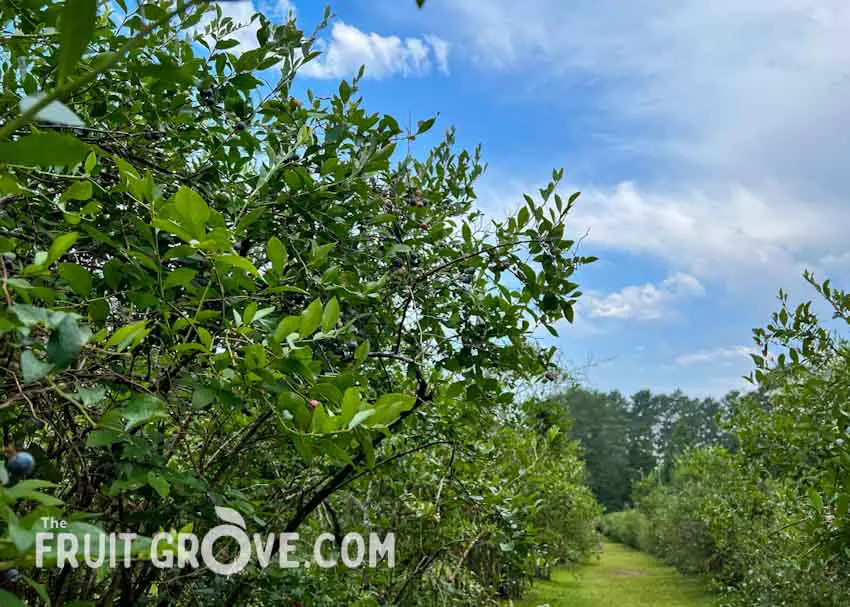
We may receive commissions from purchases made through links in this post, at no additional cost to you.
Blueberries are one of the few fruiting plants native to North America. You can still find wild blueberries in their native habitats, and domesticated cultivars are available for just about any climate. There’s a lot to love about blueberry bushes – they are beautiful deciduous shrubs, they produce large amounts of sweet berries, and they have a very long lifespan.
This is one of the things I love about growing fruit. Most fruit plants are perennial, meaning they give fruit year after year and become more productive over time. Blueberries, in particular, have the potential to live and fruit for many years – even decades!
But there are things you can do now while your blueberry plants are young that will ensure that they live a long berry-producing life. Read on to learn about the history and lifespan of blueberry bushes, including when they begin fruiting, how they fruit throughout their life, and what a gardener can do to help a blueberry plant continue growing berries for decades.
How long do blueberry bushes live and fruit?
Blueberry plants can fruit productively for 50 years or more when managed properly. The lifespan of a blueberry bush varies depending on the cultivar. Commercially, blueberry plants can be productive for as brief a period as 5 years, or they can last more than 50 years, depending on variety selection and management (source).
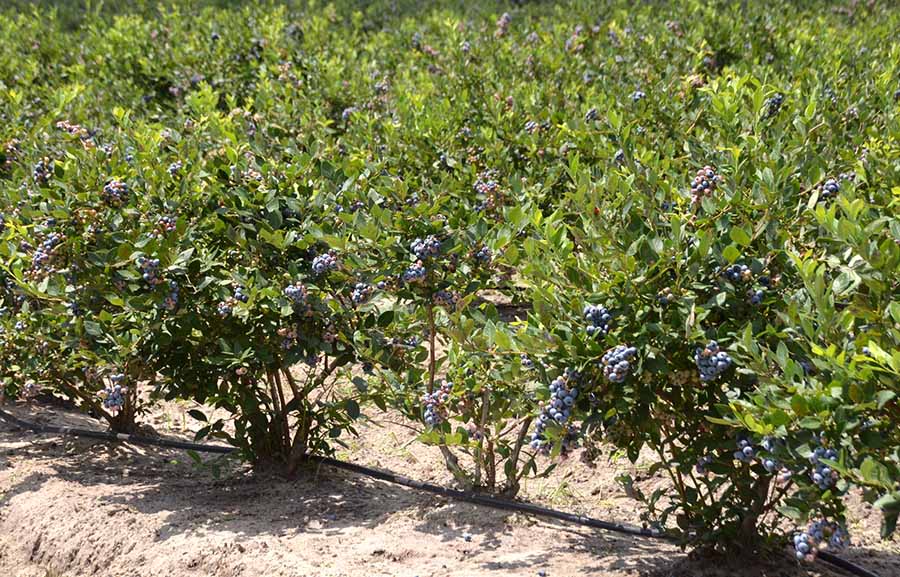
Like any plant, blueberries thrive under specific conditions. If a blueberry plant isn’t provided with the right growing environment, its lifespan will be shorter. (See the section below, “How to Help Your Blueberry Plant Last for Decades,” for details about ideal blueberry growing conditions).
Typically, a blueberry bush will grow more quickly the first couple of years in the ground. After that, the growth rate will slow. It takes 7-10 years for a blueberry bush to reach its full mature size, depending on the cultivar.
When does a blueberry bush begin fruiting?
You may see fruit on a blueberry bush within a year or two after planting. It typically takes 2-3 years for berries to begin growing on a young plant. Each year, the size of the berry crop will increase. Production peaks as the plant reaches its full size.
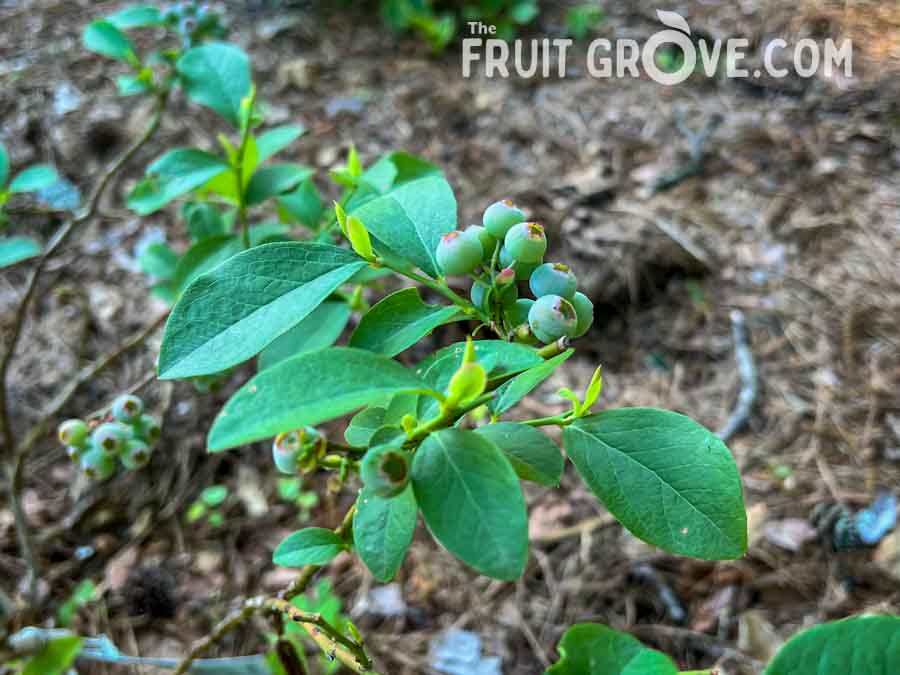
It’s recommended to remove the buds or blossoms off of the bush for the first year or two. The idea is to keep the plant’s energy focused first on growing roots and greenery, rather than fruit. Once the plant is a little older and more established, it can better support fruit growth.
When I started my blueberry patch, I followed this advice for the first fruiting season after planting the previous fall (see the video below). I did keep a few clusters of berries on each plant, just to have a sampling of what the fruit tastes like. As long as it’s just a few berries, it shouldn’t affect the growth of the plant significantly.
Learn more: Should You Remove Blueberry Blossoms the First Year?
A Brief History of Blueberries
Blueberries have been around a long time, but they have only been cultivated since the early 1900s. This is very different than many other fruits, such as apples and figs, which have been cultivated for thousands of years.
Blueberries were an important gathering crop for Native Americans. They were called “star berries” because of the five-pointed star shape made by the berry calyx. They collected and ate the berries fresh, dried them for the winter, and used all parts of the plant medicinally (source).

Curious about any garden-related terms? Click on a highlighted word in the text, or visit The Fruit Grove Glossary to find out more.
At the end of the 19th century, Elizabeth White, the daughter of a cranberry farmer, became interested in seeing if blueberries could be cultivated on her father’s New Jersey farm. She partnered with a botanist, Frederick Coville, and they began experimenting with wild blueberries found in the surrounding area.
They selected plants with the biggest berries, and eventually were able to cultivate the first farmed blueberry crop. In 1916 they had their first sellable harvest, and blueberry cultivation was born (source).
Fast forward to the 1990s and 2000s, when blueberries went “viral,” thanks to their newfound “superfood” status. The nutritional benefits of blueberries (which the Native Americans certainly were aware of) became popularized, and blueberry production exploded. U.S. production alone increased by 500% during that time.
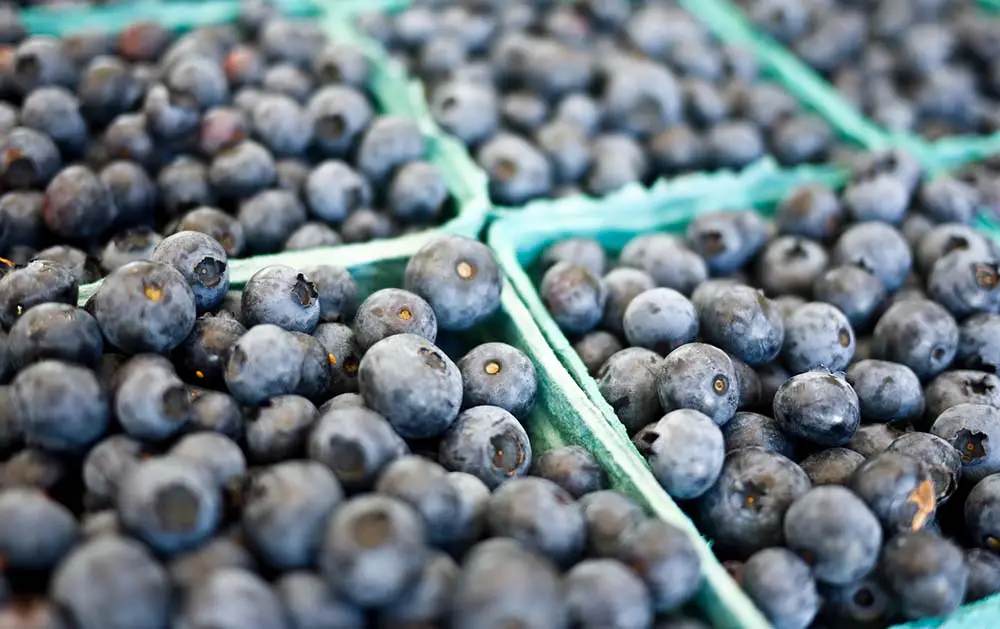
Now, blueberries are cultivated in over 30 countries on every continent (except Antarctica). At the time of writing this, the top blueberry-producing countries are the United States (led by Washington, Oregon, and Georgia), Canada, Chile, and Peru (source).
How to Help Your Blueberry Plant Last for Decades
One of the reasons it took so long to develop blueberry cultivation was due to misunderstanding their growing needs. Blueberries have very specific requirements in order to grow and fruit, which are different from many other fruiting plants.
In particular, blueberry plants need very acidic soil (a pH between 3.8 and 5.5), consistent moisture, and lots of organic material. If you are just starting out growing blueberries – or if you are about to start – there are some simple things you can do now to help your blueberry plants live a long, productive life:
1. Start with the right type of blueberry plant.
Remember the 35 different species of blueberries? Each blueberry type is better adapted to specific climates. The five main types of blueberries are northern highbush, lowbush, rabbiteye, southern highbush, and halfbush (or half-high).
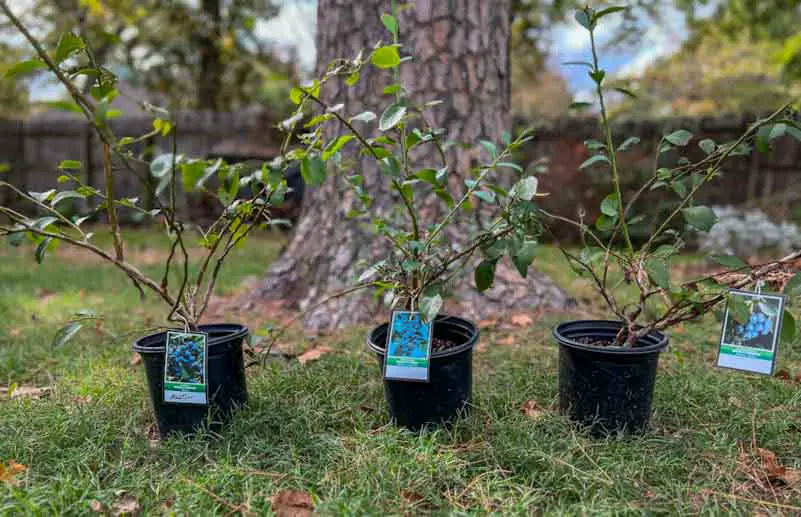
These five types all have different chill hour requirements, heat tolerances, disease resistances, sizes, and fruit characteristics. Within each type, each cultivar also varies. Do your research to find out what grows best in your area. The better adapted it is to your weather and climate, the longer it will live and fruit!
2. Focus on soil.
Before planting, test the pH of your soil. Blueberries MUST be grown at a low enough soil pH (between 3.8-5.5) to absorb the nutrients they need to grow and develop fruit. Blueberries love acidic soil ingredients like Canadian sphagnum peat moss or composted pine bark, so use these to amend your existing soil and raise the acidity (lower pH).
Learn some other ways to adjust the pH of your soil here: Soil pH for Fruit Trees: Why It Matters and How to Adjust It
In addition to monitoring the pH, continue adding organic matter to the soil. A couple of times each year (once in spring, again in fall), mulch around the plant with a combination of compost, pine straw, pine bark, or peat moss. As these ingredients break down over time, they will improve the microbial activity, water retention, and overall vitality of the soil.
Is your soil not quite right for blueberries? No worries – just plant in a container! Learn how to make a great blueberry potting mix (or which ones to buy) here: Easy Potting Mix Recipe for Blueberries (+ Favorite Brands)
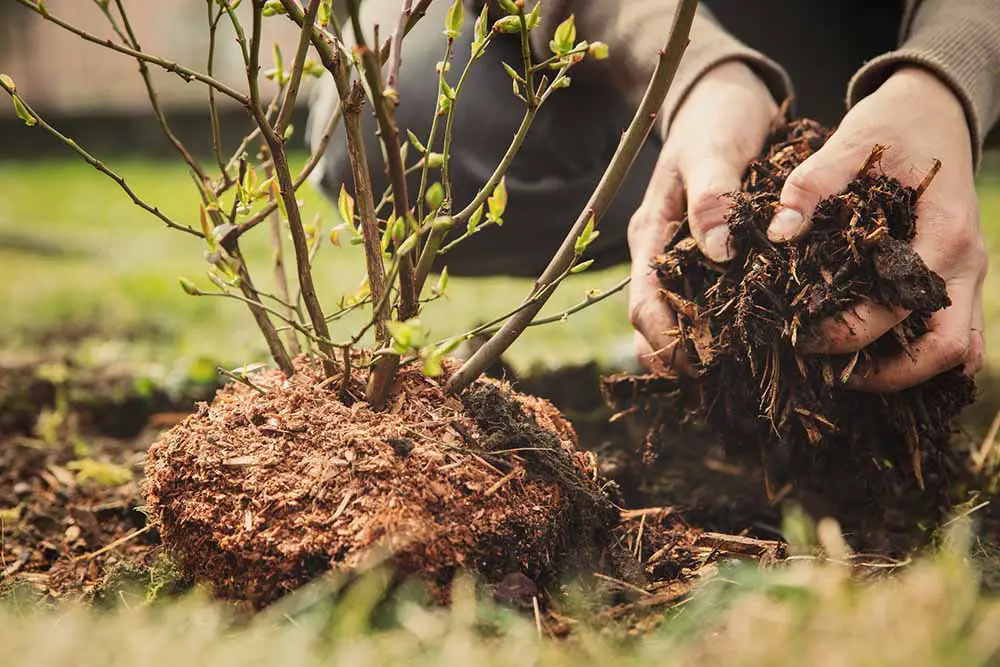
3. Control weeds.
This one’s simple, but important. Blueberry roots are very shallow (only about a foot deep), fine, and weblike. Blueberry plants do not like root competition. The last thing you want is some aggressive weeds hogging all of the water and nutrients in the soil.
Before planting, thoroughly clear any weeds away from the planting area. Use mulch to help control regrowth and keep pulling any weeds that show up.
4. Regulate moisture.
Those fine, hairlike blueberry roots don’t like to dry out. Again, mulch is your friend. Keep a fairly thick layer of organic mulch (I use a combination of pine needles, shredded leaves, peat moss, and pine bark) around the plant to keep the soil from drying out as quickly.
Blueberries don’t like to stay soggy either. Be sure your soil has adequate drainage (the speed at which water and air flow through the soil) before planting.
Learn more: Soil Drainage for Fruit Trees: Everything You Need to Know
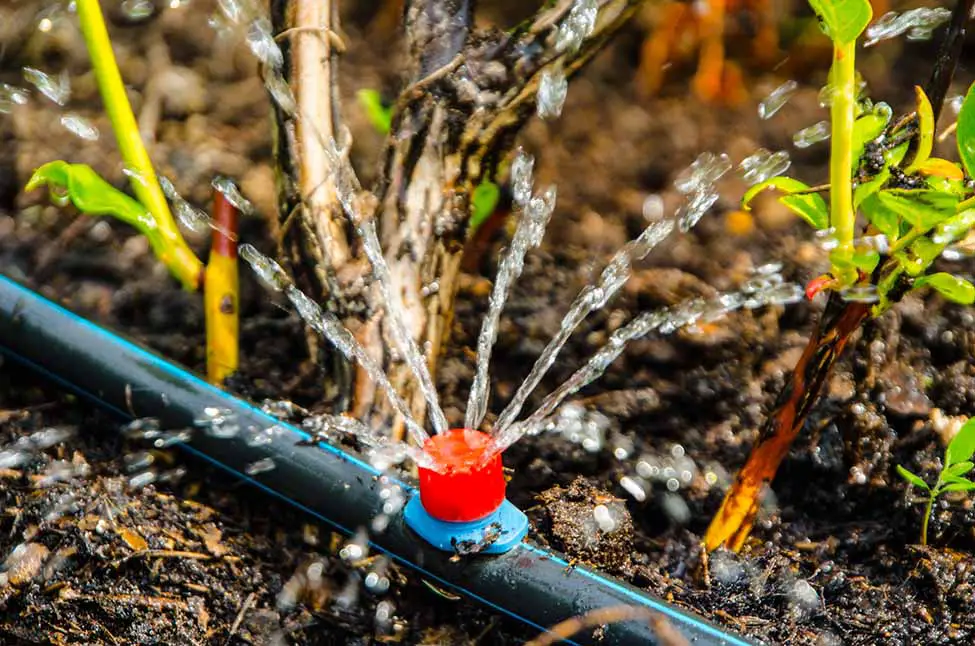
Once the plant starts fruiting, water becomes even more essential. If you live somewhere with very hot summers, like me, a mature rabbiteye blueberry plant may need between 2 and 8 gallons of water per day! Set up some drip irrigation to make this task a lot easier.
5. Pinch off fruiting buds or blossoms.
The first year after planting, remove any blossoms that appear – or at least, remove almost all of them. As I explained above, I kept a couple of clusters of fruit on my plants the first year to see what they looked and tasted like. I had planted the bushes the previous fall, so they had been in the ground about 6 months already.
If the bushes are very newly planted, then remove all of the blossoms. The idea is for the bush to focus on developing a healthy root system to support future growth and fruiting, rather than wasting its limited energy on growing berries. Allowing the plant to be established now will give it a much better chance of having a longer, more productive fruiting life.
6. Make a maintenance plan.
As the blueberry plant grows, it will need yearly pruning to rejuvenate the fruiting wood. It will probably also benefit from the application of fertilizer formulated for acid-loving plants. Be careful not to over-fertilize, however. It’s best to focus first on soil health, then use fertilizer only as needed to provide additional nutrients.
Check back here at The Fruit Grove for more upcoming resources and instructions on exactly how to maintain your blueberry plants through their – hopefully – long and delicious lives.

